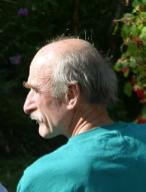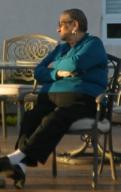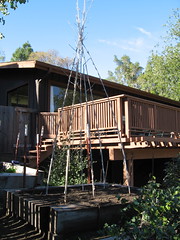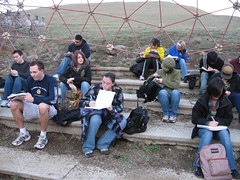Solitude
Wednesday, January 23rd, 2008The second day of rain. The gift from heaven prayed for in need. Wet. Cold. Dark.
My aunt Hannelore died Monday in Sao Paulo. She was 86, my mother’s half sister. We met in person only during the visit Jan and I made to Brazil ten years ago. But we talked regularly on the phone, and corresponded at length by letter and email. She was a born writer with a great mind. They wouldn’t let her become a doctor in the 1930’s. She married an older man who took a mistress and left her nothing in his will. She always loved him. “In her home when she was going to upstairs, her hart stooped and she died quietly,” wrote my cousin Marcelo.
On Friday we attended Maggie’s funeral. Saturday was Don’s memorial celebration in Lund. Sunday a fiftieth wedding anniversary celebration outside Solvang, where I sat next to a woman I went to elementary school with. We didn’t say it, but looked at each other marveling at the ravages of time.
I’m feeling overwhelmed by the demands of teaching, the impending climax of Focus the Nation next week, the huge expansion of the Sierra Club’s chapter’s commitments to lawsuits and fundraisers. I cant do justice to any of the specific obligations they incur, let alone to the doom-laden mission to do something about the threat of Global Warming which lurks behind all of them.
I wake up with grim determination to get through the day and I plow through the piled on tasks longing simply for the moment to sink into the pillow at night. Maggie, Don, Hannelore, enjoy your rest.
I regret binding myself with duties that generate unrelenting anxiety, that pull me away from the innocent vitality and the fresh bodies of my four grandchildren, and of the other kids at Ian’s school I was able to play with in the autumn. I long for more of the retreat at Knoll House and regret leasing it out to Tristen and his family for another year or two.
I read Thoreau to prepare for today’s class.
There can be no very black melancholy to him who lives in the midst of Nature and has his senses still. There was never yet such a storm but it was Æolian music(1) to a healthy and innocent ear. Nothing can rightly compel a simple and brave man to a vulgar sadness. While I enjoy the friendship of the seasons I trust that nothing can make life a burden to me. The gentle rain which waters my beans and keeps me in the house today is not drear and melancholy, but good for me too.
I want to take this therapy with a walk outside or with reading my own ecologs, but instead I have to scurry to get on with the jobs at hand. I know that the movement through isolation and sadness leads to connectedness and joy, and that the more room given to grief, the grander the reward:
I have never felt lonesome, or in the least oppressed by a sense of solitude, but once, and that was a few weeks after I came to the woods, when, for an hour, I doubted if the near neighborhood of man was not essential to a serene and healthy life. To be alone was something unpleasant. But I was at the same time conscious of a slight insanity in my mood, and seemed to foresee my recovery. In the midst of a gentle rain while these thoughts prevailed, I was suddenly sensible of such sweet and beneficent society in Nature, in the very pattering of the drops, and in every sound and sight around my house, an infinite and unaccountable friendliness all at once like an atmosphere sustaining me, as made the fancied advantages of human neighborhood insignificant, and I have never thought of them since. Every little pine needle expanded and swelled with sympathy and befriended me. I was so distinctly made aware of the presence of something kindred to me, even in scenes which we are accustomed to call wild and dreary, and also that the nearest of blood to me and humanest was not a person nor a villager, that I thought no place could ever be strange to me again.
Another mixture of Henry’s truth and lies. One hour only he says he felt lonesome. But I sense that he grappled with that “insanity” every day, rain or shine. And that he knew the struggle was what produced the exaltation that made the common companionships of life pale to inadequacy. Every gorgeous item in the catalogue of solitary joys that follows is drawn with ink of ashes and tears.





